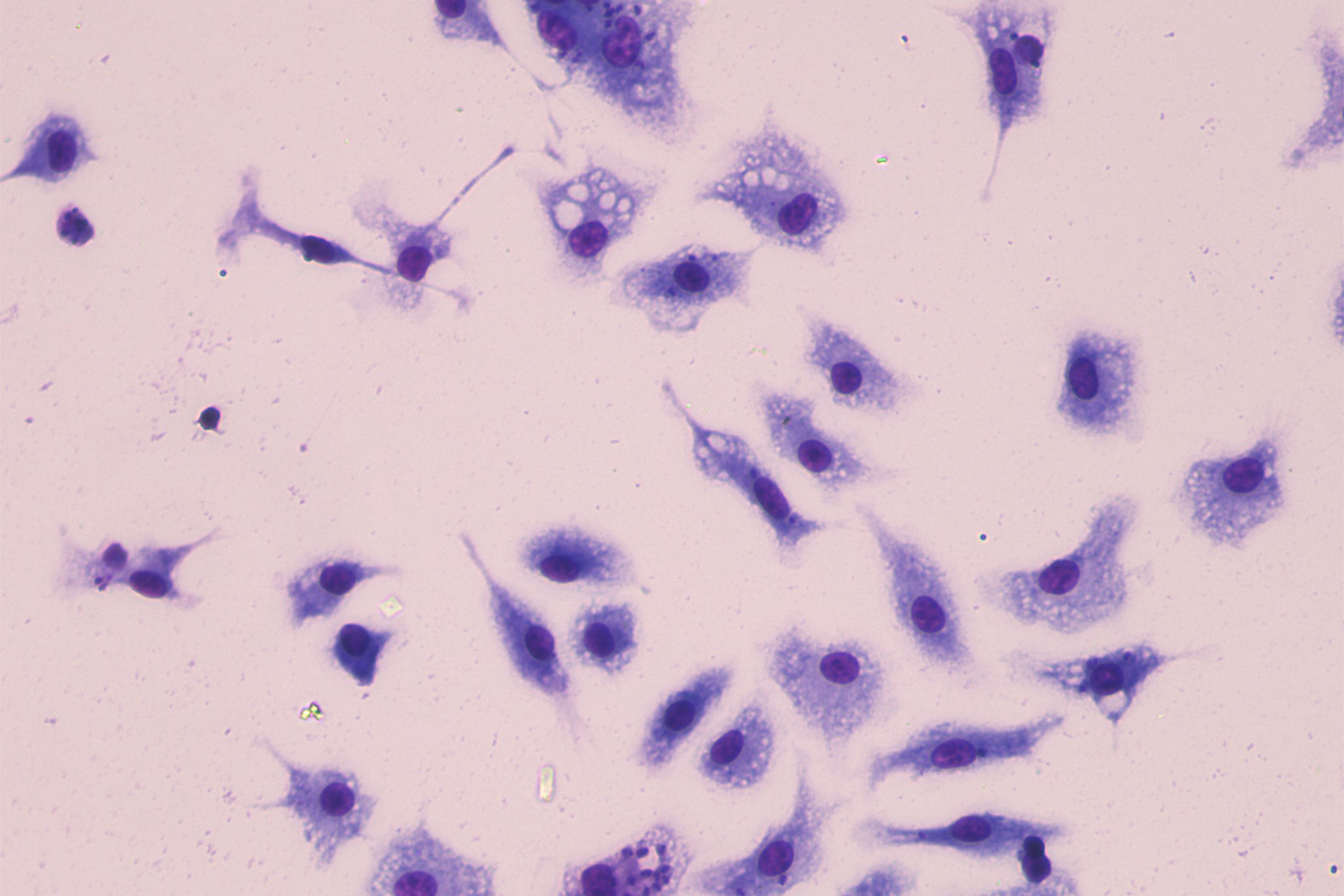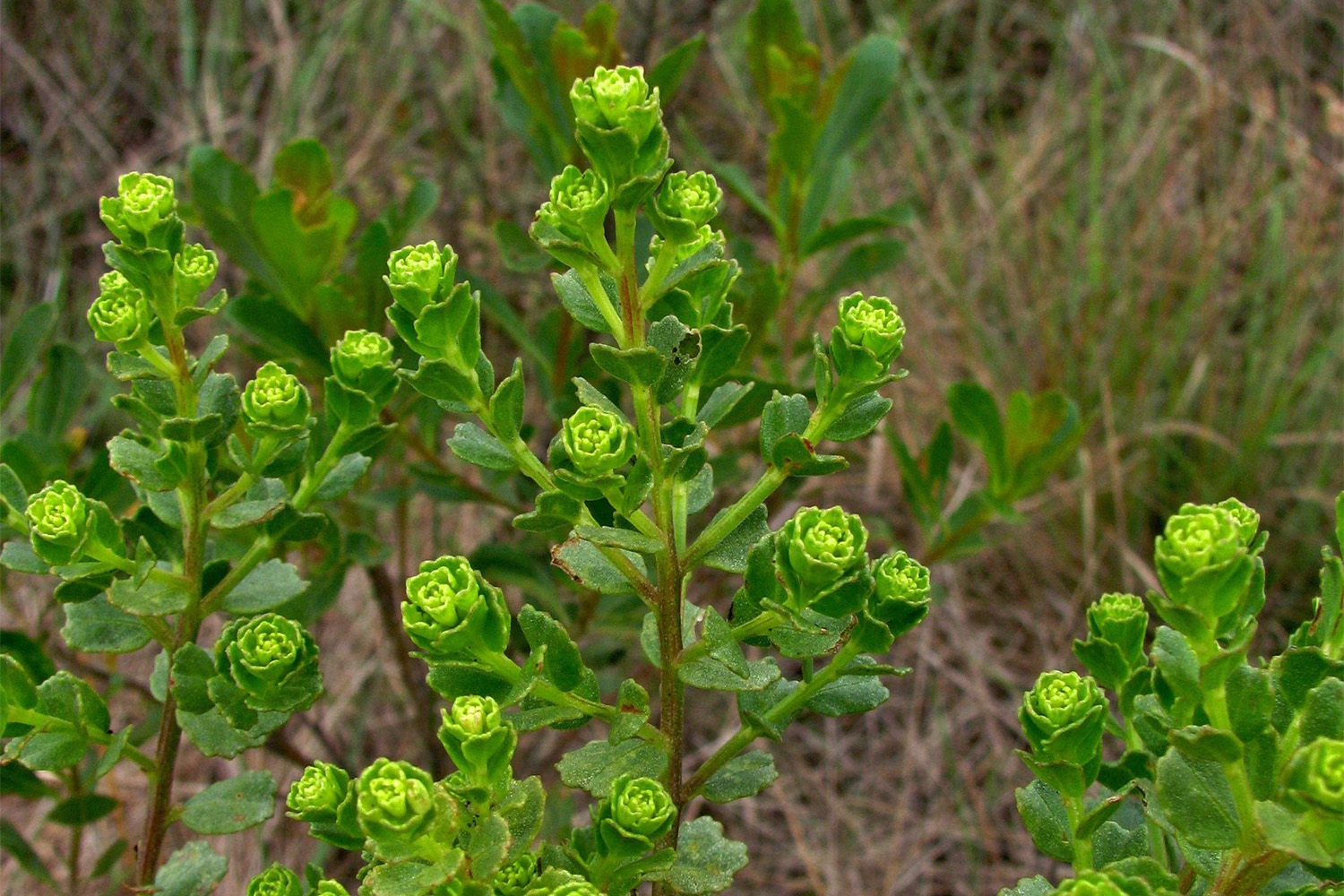Natural substances against neglected tropical diseases Visiting doctoral student from Brazil isolating potentially active substances against the parasite causing Chagas disease
Matheus Lopes Silva was a guest doctoral student from the University Universidade Federal do ABC’ São Paulo (Brazil) at TU Braunschweig for six months. In September 2022, he came to Germany for his research to work under the guidance of Dr Gerold Jerz at the Institute of Food Chemistry. Here he reports on why active agents against so-called Neglected Tropical Diseases are so important, what the challenges are and how the university was able to support him.

The picture displays macrophages obtained from the spleen of Rhesus monkey. The macrophages on the picture are infected with Trypanosoma cruzi differentiated into amastigote (intracelular forms), which is considered the “relevant” form of the parasite, as it can survive inside the macrophage and escape the immune system. In the picture, we observe that the treatment with the active substances is reducing the amount of amastigotes forms inside each macrophage. Image credits: Joao Lago and Matheus Silva.
As part of the “Research Network Natural Products against Neglected Diseases” (ResNetNPND) in which my PhD supervisor Prof. João Lago (UFABC) and Dr Gerold Jerz participate, I isolate natural products with biological potential – so-called metabolites of natural origin (plants, fungi, bacteria, etc.) that could be effective against the incurable human-pathogenic, parasitic Chagas disease (Trypanosoma cruzi).
Natural products have in many cases been the main source in the search for molecular prototypes (lead compounds) from which new medications have been developed and approved for therapeutic purposes over the last 40 years. There are a number of natural products that have been used directly as therapeutic agents without further chemical structural modification, including quinine and artemisin against malaria, morphine as an anaesthetic and analgesic, epothilone and vincristine as cytostatics in tumour treatment, to name just a few classic examples.
In this sense, the classical plant chemical analysis (chromatographic isolation) and the subsequent characterisation (by means of mass spectrometry, nuclear magnetic resonance spectroscopy, among others) of potentially bioactive natural substances can also be seen as a means of discovering new effective substances against the neglected diseases explained below.
As defined by the World Health Organisation (WHO), several diseases are listed as Neglected Tropical Diseases (NTD), which mainly occur in subtropical and tropical climatic zones, but as a main feature particularly affect the poor rural population.
What does “neglected” mean?
In general, the development of new, effective pharmaceuticals is a very long and, above all, costly path from the discovery of the active ingredient to the approved medical end product.
In the past, the pharmaceutical industry has done little research into therapeutics in this field of active substances, even though these NTDs acutely affect several million people. There is therefore an enormous need for new innovative agents to help those affected, to save them from disease and death, and to be prepared for the developing resistances. We know this problem of a lack of new classes of active substances very well in the field of antibiotics, in order to be able to treat resistant bacterial infections, including tuberculosis.
One of the unfortunate explanations for this situation is that expensive drug supply is not affordable, especially for rural regions in developing countries. Consequently, from an industrial point of view, there is a cost-investment imbalance, which makes modern and efficient research into new active substances not very attractive.
The ResNetNPND network consists of a university-based association of multinational research groups [1] that have set themselves the task of searching independently and funding-independently for effective lead compounds in the large portfolio of natural products.
Brazil currently carries one of the highest medical burdens in terms of NTDs, for example life-threatening viral diseases transmitted by mosquitoes and other insects (dengue, zika, chikungunya and yellow fever) and also parasitic diseases (malaria, leishmaniasis, schistosomiasis and Chagas disease).
However, Brazil is also a hotspot of global biodiversity with 15 to 20 percent. This existing diversity of plants and fungi could provide an almost infinite library of natural products. In the last decade, several articles have been published on the bioactivity of compounds from the endemic Brazilian genus Baccharis [1, 2, 3].
Challenge: Localising substances in complexly composed extracts
In the plant family Asteraceae, I am specifically investigating some of these representatives of the genus Baccharis in my dissertation work. The focus is on the species B. sphenophylla, a plant that has not been studied phytochemically before. Extracts obtained by solvent maceration showed activity against the parasite Trypanosoma cruzi, the causative agent of the as yet incurable Chagas disease. The important task for the natural product chemist is to localise the substances responsible for the biological activity in these very complex extracts in order to isolate them by preparative means for the further important bioactivity tests and to make them sufficiently available.

Study plant Baccharis sphenophylla (Asteraceae) in its natural habitat. Image credit: REFLORA (floradobrasil.jbrj.gov.br)
Why TU Braunschweig?
The purification of natural substances can be very time-consuming and cost-intensive and may involve several process steps. For this reason, I came to the Institute of Food Chemistry at TU Braunschweig to use countercurrent chromatography (CCC), which has been used there for years, to separate my promising extracts as effectively and economically as possible on a laboratory scale.

Matheus Lopes Silva (doctoral student from Brazil) and Dr Gerold Jerz at a high-performance countercurrent chromatography system for the preparative isolation of bioactive natural compounds from complex crude extracts (separation capacity approx. 500-1000 mg dry extract/hour). Picture credits: Matheus Silva
CCC, despite its enormous advantages in application, is not yet a very common chromatographic purification technique. It is possible to work cost-effectively with recoverable solvent mixtures or so-called renewable green solvents. Many Brazilian universities lack the equipment, training or knowledgeable personnel to use this method. This current, practice-oriented research makes an important contribution to the scientific exchange between Brazil and Germany.
Among the advantages already indicated in the use of CCC for natural substance purification, one fact in particular is of great importance: the entire substance quantity that was used for preparative separation can also be completely recovered in fractionated form – without any material losses (chemisorption). In contrast, classical solid-phase chromatography on silica gels, among others, shows this undesirable effect and can possibly lead to the loss of the bioactivity actually sought in the course of the isolation process.
As of the end of the project in March 2023, we have now achieved a complete identification of the natural compounds that can be isolated on a laboratory scale from the available extracts of Baccharis sphenophylla. Further evaluation of these natural compounds as potential lead compounds against Trypanosoma cruzi will now take place at the designated specialist institute for NTDs, the Adolfo Lutz Institute under Prof. Dr André Tempone (São Paulo, Brazil). We hope that we have come a little closer to our goal – new innovative, tolerable and cost-effective substances for the therapy of Chagas disease.
Text: Matheus Lopes Silva, Gerold Jerz
